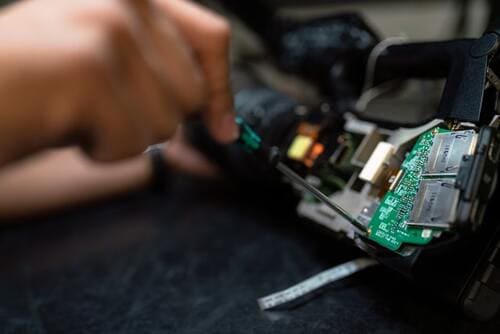Fiber Bragg grating (FBG) sensors have already been applied in various applications and still arouse great production interest. They are commonly used in structural health monitoring for aerospace, civil engineering, oil & gas, etc.
As for the railway industry, fiber optic technology has made a substantial contribution to its development. It is anticipated that within a few years the number of goods that will be transported by railways will be increased, as well as the number of passengers. This, in turn, will lead to the growth of the axle load and trains’ faster speeds operating.
That’s why there is a great need for a full understanding of the rails’ structural and operating conditions as well as for providing safe and reliable operating conditions. So modern innovative technologies are required.

Fiber Optic Solutions for Monitoring Systems in the Railway Industry
In railways, common monitoring systems use strain gauge sensors. The sensors constantly measure resistance caused by the stress transmitted by the rail when the train runs through it. This fiber optic technology is already prominent due to its effectiveness. However, it still has several shortcomings. For example, it is expensive, huge and has difficulties in usage, in comparison with modern FBG sensors. Moreover, the most important disadvantage is that they can be affected by electromagnetic interference. FBG sensors are immune to the external interference such as electromagnetic interference, lightning and many other external disturbances.
Because of this, fiber Bragg grating sensors are getting more and more applications in high-speed railway networks. Applications are train weight estimation, measurement of train speed for real time, wheel imbalance detection, etc. It is clear from experiments that FBG sensors are more appropriate as railway monitoring systems compared to electrical ones.
Fiber Bragg Grating Sensors Characteristics
FBG sensors provide many crucial features for unique operational conditions in railways. In comparison with usual electrical sensors, fiber Bragg grating sensors have EMI/RFI immunity, multiplexing capability and can offer interrogation for long distances. In FBGs the data is wavelength-encoded, which makes the signals less susceptible to intensity fluctuations. Moreover, the fiber optic cable can be interrogated from either end, offering redundancy to FBG sensing networks. Plus, FBGs have a self-calibration capability. The strain and temperature measured findings is an absolute parameter. So there is no dependency on the measurement value and losses between the interrogation unit and the FBGs. To fabricate FBG sensors, FBGs are packaged and transformed into different types of transducers. That makes it possible to install them on the rail track fasteners, clips, bogie, train body, chassis, and axle boxes of a train to provide ongoing inspection for health checking.
In addition to that, FBG sensors can be interrogated at very high-speeds.
Providing reliable operational conditions, fiber optic designs can measure a wide range of other parameters such as inclination and acceleration through the modulation of light in reaction to the environment. Therefore, one FBG interrogator can work with a lot of FBG sensors to measure many options at the same time at different locations over the vast territory. The sensing signals can be read at distances more than 100 km away.
These features are especially useful for the railway industry because they allow simplifying the installations a lot and reducing costs.
Fiber Bragg Grating Sensors in Field Projects
Over the past few years, specialists have safely held a number of field trial railway projects involving FBG sensors. For example, in 2007, about fifty FBG-based vibration sensors were installed along the East Rail Link that connects Hong Kong and Mainland China. Then fiber optic solutions were applied in metro lines of Hong Kong, part of the Beijing-Shanghai High-speed Rail Link, and in Delhi Airport Metro Express Line.
In Hong Kong this fiber optic technology was applied on a passenger rail system as a structural health monitoring system. The FBG sensors were attached to the bottom of the carriages. The goal was temperature and strain measurement. The fiber optic system supplied all the necessary data including rail tracks’ and carriages’ deformation. The acquired information helped to assess the rates of the corrosion and bearing wear.
According to the results, due to FBG sensors, costs of maintenance were greatly reduced. Moreover, it helped to avoid or prevent problems at early stages due to the early detection of excessive vibrations. All these works showed that FBG sensors are superior in comparison with conventional sensors in many essential aspects.
Nowadays, fiber optic solutions are regarded as one the most cost-effective technology that helps in monitoring the condition and structural health of the carriages, tracks, and under frame equipment in railway systems. There are still some parameters that need to be improved, like the lack of proprietary and custom specifications. However, in the future major railway operators can apply modern FBG sensors, gaining more field experience.
Optromix is a fast-growing vendor of fiber Bragg grating (FBG) product line such as fiber Bragg grating sensors, for example, fbg strain sensors, FBG interrogators and multiplexers, Distributed Acoustic Sensing (DAS) systems, Distributed Temperature Sensing (DTS) systems. The company creates and supplies a broad variety of fiber optic solutions for monitoring worldwide. If you are interested in structural health monitoring systems and want to learn more, please contact us at info@optromix.com










